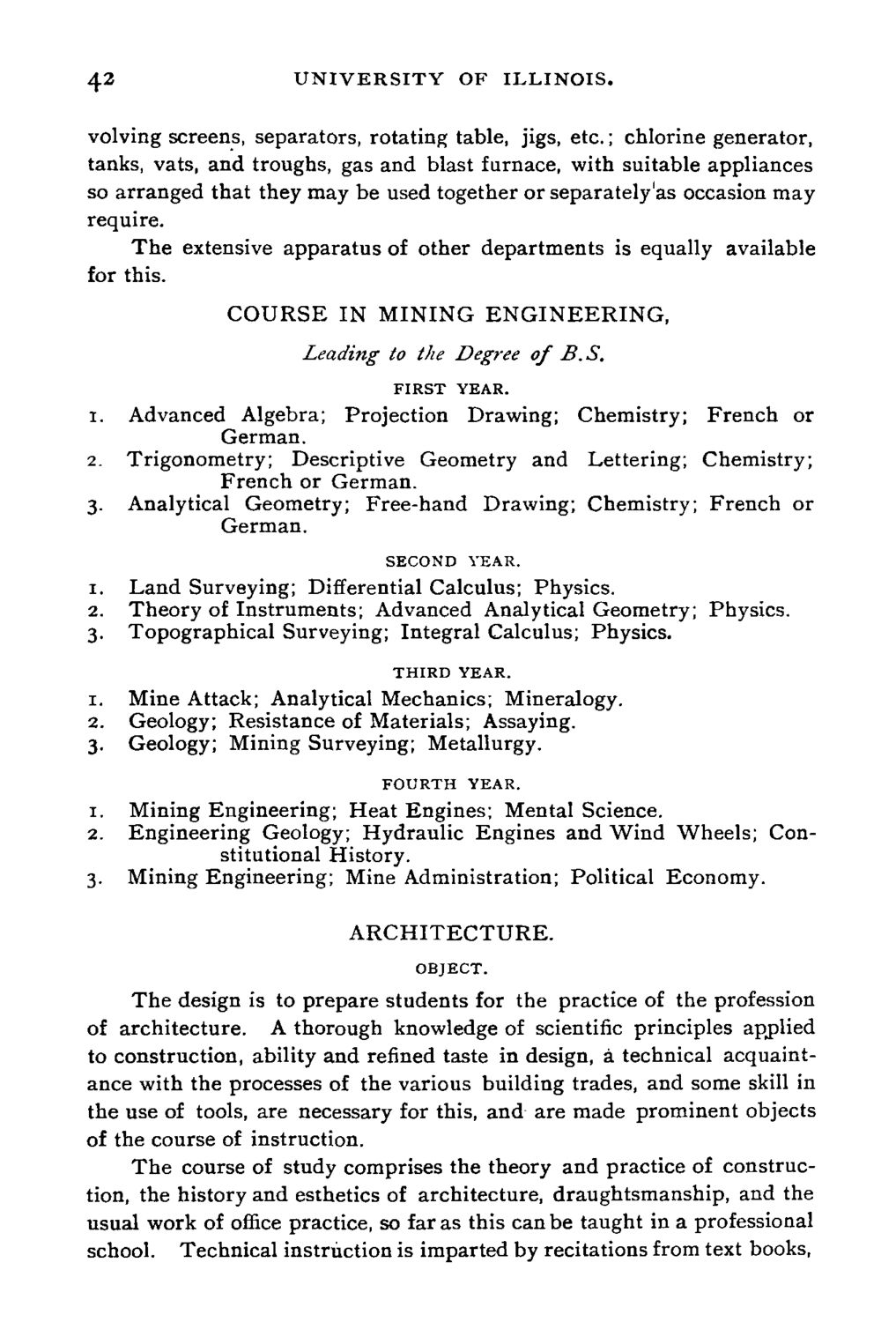Caption: Course Catalog - 1890-1891
This is a reduced-resolution page image for fast online browsing.

EXTRACTED TEXT FROM PAGE:
42 UNIVERSITY OF ILLINOIS. volving screens, separators, rotating table, jigs, etc.; chlorine generator, tanks, vats, and troughs, gas and blast furnace, with suitable appliances so arranged that they may be used together or separately'as occasion may require. The extensive apparatus of other departments is equally available for this. COURSE IN MINING ENGINEERING, Leading to the Degree of B. S. FIRST YEAR. 1. Advanced Algebra; Projection Drawing; Chemistry; French or German. 2. Trigonometry; Descriptive Geometry and Lettering; Chemistry; French or German. 3. Analytical Geometry; Free-hand Drawing; Chemistry; French or German. SECOND YEAR. 1. Land Surveying; Differential Calculus; Physics. 2. Theory of Instruments; Advanced Analytical Geometry; Physics. 3. Topographical Surveying; Integral Calculus; Physics. THIRD YEAR. 1. Mine Attack; Analytical Mechanics; Mineralogy. 2. Geology; Resistance of Materials; Assaying. 3. Geology; Mining Surveying; Metallurgy. FOURTH YEAR. 1. Mining Engineering; Heat Engines; Mental Science. 2. Engineering Geology; Hydraulic Engines and Wind Wheels; Constitutional History. 3. Mining Engineering; Mine Administration; Political Economy. ARCHITECTURE. OBJECT. The design is to prepare students for the practice of the profession of architecture. A thorough knowledge of scientific principles applied to construction, ability and refined taste in design, a technical acquaintance with the processes of the various building trades, and some skill in the use of tools, are necessary for this, and are made prominent objects of the course of instruction. The course of study comprises the theory and practice of construction, the history and esthetics of architecture, draughtsmanship, and the usual work of office practice, so far as this can be taught in a professional school. Technical instruction is imparted by recitations from text books,
|